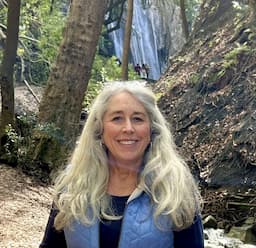A Hispanic Teenager in a Japanese Internment Camp
Would you go to an internment camp if you didn’t have to?
 Ralph Lazo did.
Ralph Lazo did.
February 19 is the anniversary of Executive Order 9066. It was a little over two months since Japan bombed our naval base at Pearl Harbor, and people were antsy about the Japanese residing in our country. The military was especially antsy because a large number of these Japanese lived near strategic military facilities in the west. So Franklin Roosevelt issued the order to relocate any person deemed a threat to national security.
And with that order, over 110,000 people of Japanese descent were “relocated,” a euphemism for forcing people against their wishes to live in an internment camp. Never mind, that most of these were American citizens.
We were also at war with Germany and Italy, so this executive order also applied to them. But only 5,000 Germans and 300 Italians were relocated and interned. Considering how many American citizens were of Italian and German descent, an extremely small percentage of them were relocated compared to what happened to Japanese-Americans.
 OK, so an internment camp was not exactly a concentration camp, but it wasn’t summer camp either. Jobs were lost and freedom was greatly curtailed. Friends and family were separated—and that didn’t sit well with
OK, so an internment camp was not exactly a concentration camp, but it wasn’t summer camp either. Jobs were lost and freedom was greatly curtailed. Friends and family were separated—and that didn’t sit well with
Ralph Lazo.
Ralph knew what discrimination felt like. He was a Mexican-American born in a black hospital. He had also lived briefly on a reservation, attending a school where discrimination again reared its ugly head. And now he was seeing discrimination in a new way as his neighbors became antagonistic and hateful toward the Japanese in their neighborhood.
In 1942, when this executive order was signed, Ralph Lazo was a 17-year-old high school student. When his Japanese friends had to report in and board a bus for relocation, Ralph was in line with them. Amazingly, no one questioned his presence! His brown skin likely played a factor, but the fact remains: he was not Japanese!
 Lazo went with his friends to Manzanar, one of the ten camps established for the Japanese. Located in the Sierra Nevadas, it was an ideal place for dust storms, brutal heat, and frigid winters, but not an ideal place for housing people in flimsy buildings.
Lazo went with his friends to Manzanar, one of the ten camps established for the Japanese. Located in the Sierra Nevadas, it was an ideal place for dust storms, brutal heat, and frigid winters, but not an ideal place for housing people in flimsy buildings.
Ralph Lazo could have left at any time—but he stayed. While there were other non-Japanese in these camps (spouses), Ralph Lazo was the only one there out of solidarity. He threw himself fully into the community, building strong friendships with many Japanese, learning their language and culture, and even becoming class president of the high school.
The only reason Lazo left the internment camp was because he was drafted. He went to fight for his country—a privilege not given to his Japanese-American friends.
I know of only one other person who voluntarily gave up freedom to join captives. We were captive to sin, but Jesus Christ voluntarily stepped into our world to become like us. He didn’t have to do it, but He chose to.
“[Jesus,] who, existing in the form of God, did not consider equality with God as something to be exploited. Instead he emptied himself by assuming the form of a servant, taking on the likeness of humanity” (Phil. 2:6-7).
Ralph Lazo joined the Japanese to protest what was happening to his friends and to show solidarity with them. Beyond that, there was nothing he could do. On the other hand, Jesus could do something about our captivity. Through His voluntary death, He took the sin that was ours, made it His, and removed it.
“For Christ also suffered for sins once for all, the righteous for the unrighteous, that he might bring you to God” (1 Pet. 3:18).
Jesus became like us so that we could ultimately become like Him: free of sin, righteous, and living fully in the love and grace of God.
Subscribe to this blog or like our Facebook page. And share this post with others.





